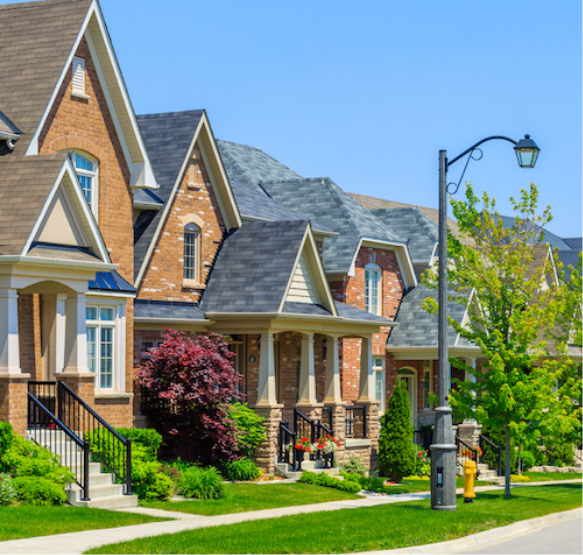For decades, the housing industry has viewed climate risk as a fairly straightforward issue.
You build the home to code. You use the right comps to appraise it. You check the 100-year floodplain determination box during origination. Job’s done – the rest can be handled by the property and casualty folks.
Recently; however, that perspective has begun to fade as the frequency and severity of these ‘once-in-a-lifetime’ events has continued to increase, each one causing more damage than the last.
And yes, this certainly has had an impact on insurance companies from coast to coast, as we’ve seen insurers retreat en masse from states such as California, Florida, and Texas, which have all seen record losses in recent years from wildfires, earthquakes, hurricanes, severe winter storms, sinkholes, and more. However, the ramifications of climate risk are now being felt throughout the broader industry, especially as a larger and larger percentage of this damage comes in the form of uninsured losses.
These losses – both insured and uninsured – have traditionally been borne by homeowners, renters, landlords, builders, and property & casualty insurance companies.
Change in uninsured losses
As of late, however, the uninsured losses are being absorbed by other stakeholders in the housing finance system, including mortgage lenders, mortgage servicers, private mortgage insurers, government agencies, capital markets investors, and the government-sponsored enterprises.
And this has not gone unnoticed by federal regulators who seem increasingly concerned for the risks that uninsured climate-related losses pose to our nation’s broader financial system. The Federal Housing Finance Agency (FHFA) issued a request for information in January 2021 focused on Climate and Natural Disaster Risk Management at Fannie Mae, Freddie Mac, and the Federal Home Loan Banks. Both the Securities and Exchange Commission (SEC) and General Services Administration (GSA) are looking to amend disclosure law to better account for climate risk among public companies and the federal contractor supply chain, respectively. And the Federal Reserve has asked the nation’s six largest banks to participate in a climate scenario analysis designed to measure and manage climate-related financial risks.
It’s time to get serious about climate risk
It is time for the housing industry to get serious about the importance of climate risk, which has pushed its way to the forefront among the most critical issues facing our housing system today. Thankfully, recent technological innovations in climate science and analytics allow us to quantify the true impact of climate risk, and it goes well beyond the 100-year floodplain designation to which we’ve grown accustomed.
If you’re reading this, you are probably already aware that CoreLogic has long been the industry standard for 100-year floodplain risk, covering everything from flood determinations to underwriting risk to catastrophic flood risk assessments for insurers, capital markets, and more. We know firsthand that flooding is the most common natural disaster that our nation faces, accounting for roughly 75% of all presidential disaster declarations in the United States. Floodplain determinations are the cornerstone of hazard risk assessments in this country, and they will continue to play a large role for years to come.
However, as the frequency and severity of natural hazards continues to increase, there is so much more that needs to be considered. The impacts of climate change are introducing additional layers of risk to the mortgage industry, and we need to think seriously about how we plan to identify, quantify, and mitigate that risk.
Climate Risk Analytics
To this end, CoreLogic recently launched Climate Risk AnalyticsTM, which offers a comprehensive view of physical risk that combines hyperlocal property data with financial information to estimate and mitigate the impact and cost of future catastrophes. This solution – built on Google Cloud’s secure and sustainable infrastructure – is designed to help companies, government agencies, and enterprises measure, model, and mitigate the physical risks of climate change to the housing industry, from the present through 2050.
Climate Risk Analytics can help banks to quantitatively articulate their overall physical risks while also fulfilling their regulatory obligations to present key stress test results to agencies like the Federal Reserve.
Allows mortgage bankers to prioritize post-disaster mortgage servicing
In practice, Climate Risk Analytics will help mortgage bankers prioritize certain aspects of their post-disaster mortgage servicing process (e.g., property inspections) allowing them to restart their origination pipelines much sooner and continue to close loans without delay. It will provide underwriters with a more holistic view of all the property information, natural hazard risk assessments, and loan documentation that they will need to understand the true risks to a specific property.
Mortgage servicers who are obligated to advance principal, interest, taxes, and insurance (PITI) payments on the loans they hold will be able to better identify specific loans that may become delinquent or be at a higher risk of default as a result of a natural hazard and prioritize them in response efforts. Secondary markets investors can use this solution to aggregate and analyze physical risk at a portfolio level, helping to guide future investment strategies. And federal regulators can better address climate-related financial issues facing low-to-moderate (LMI) communities and communities of color.
In short, CoreLogic Climate Risk Analytics is designed to provide the housing industry with an end-to-end, complete collateral solution for assessing climate-related physical risk.
As Congress, the federal government, and the housing industry continue to question the true extent of natural hazard risk – and how we insure it – there is a growing need for new insights and tools that can identify and address the complex challenges associated with climate change. By combining existing risk management techniques with innovative climate risk modeling, we can build a stronger, safer, and more resilient housing market. One that minimizes uninsured losses, optimizes the use of taxpayer funds, and better protects homeowners from future disasters.
This article was written by Jay Kingsley, president, Mortgage Solutions for CoreLogic; Pete Carroll, executive and head of public policy for CoreLogic; and Russell McIntyre, senior policy analyst for CoreLogic.





